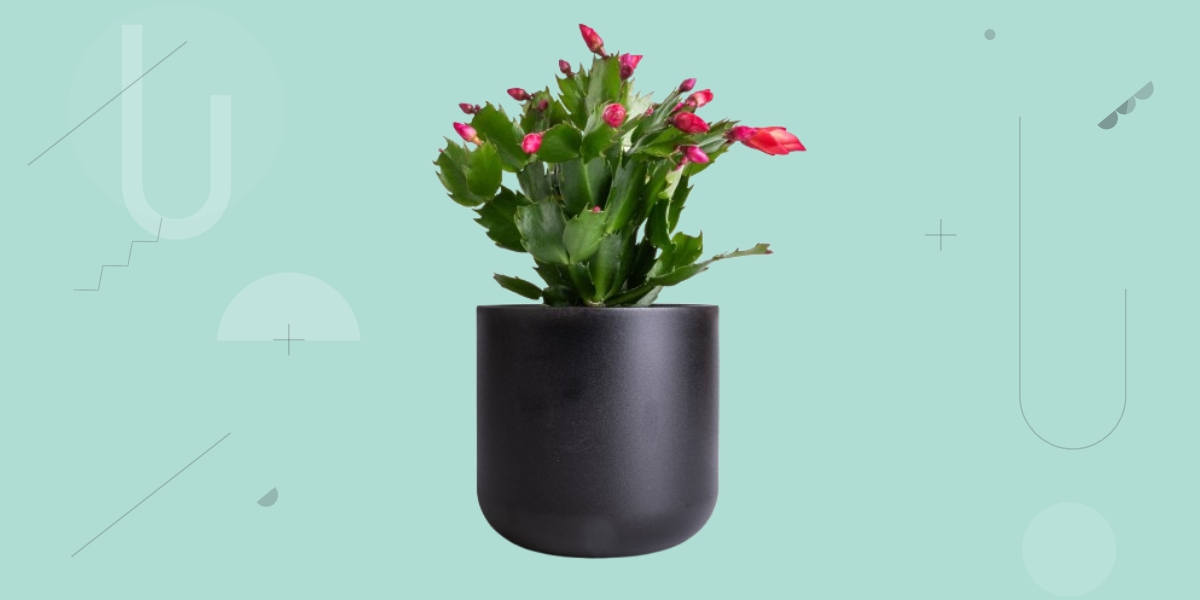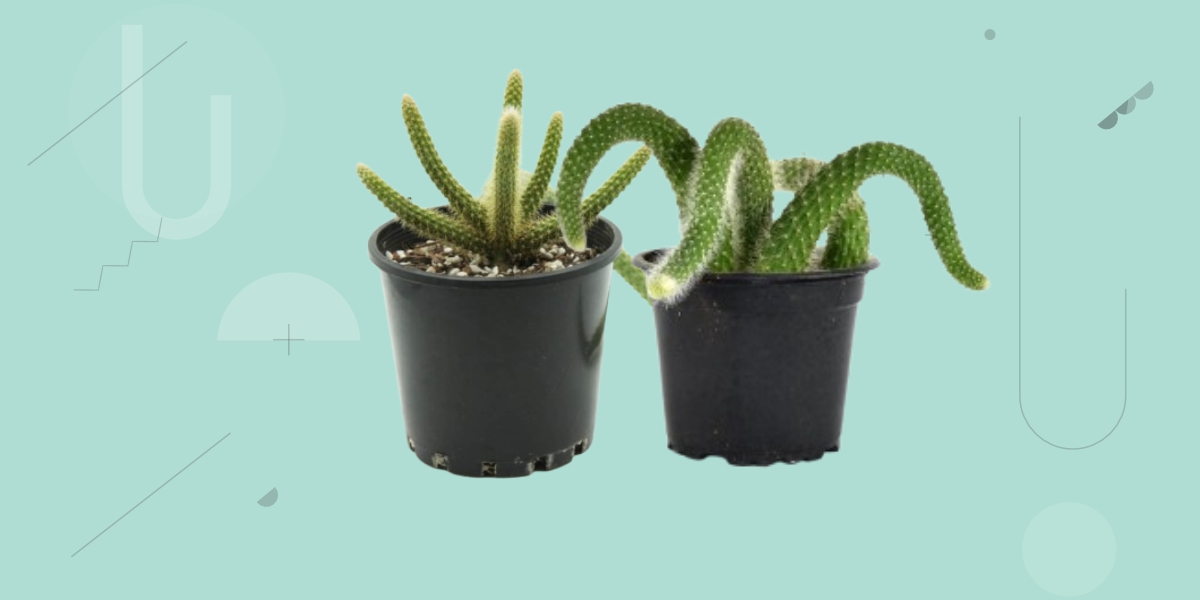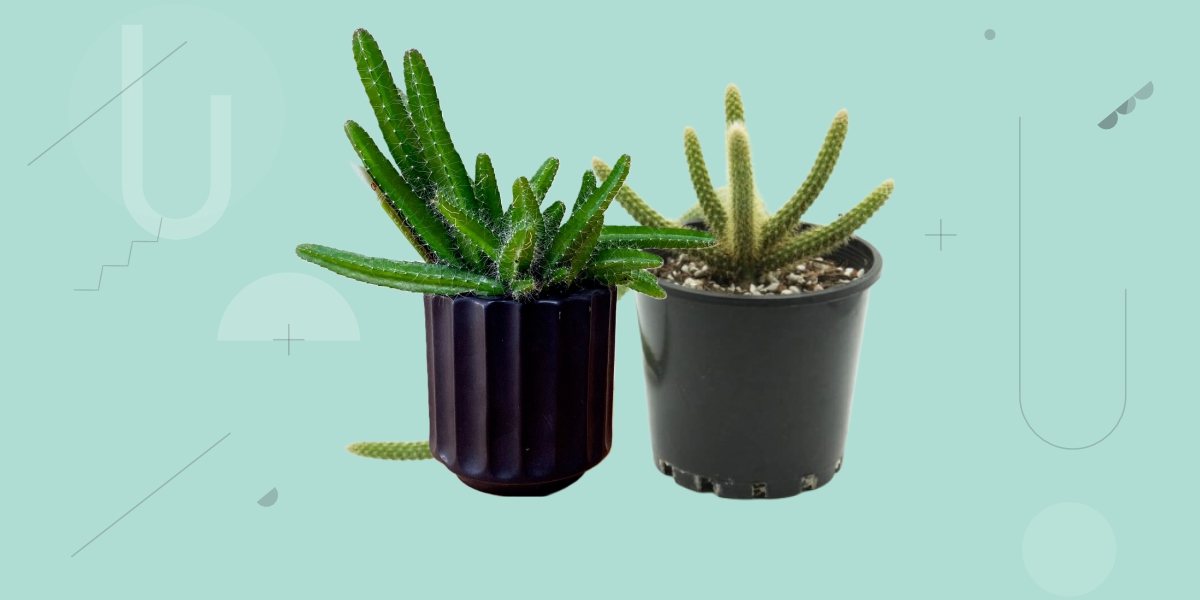Regarding unique and striking cacti, the Monkey and Rat Tail cacti stand out for their distinctive appearances and growth habits. In this comparison, we will explore the visual differences, care needs, and growth rates of the Monkey Tail and Rat Tail Cacti, providing a comprehensive guide to help you understand and care for these fascinating plants.
Overview of Monkey Tail Cactus
The Monkey Tail Cactus, scientifically known as “Cleistocactus winteri,” is distinguished by its long, trailing stems covered in soft, white, hair-like spines, which give it a furry appearance.
These vibrant green stems can grow several feet long, making the plant an excellent choice for hanging baskets or as a draping addition to pots (1).
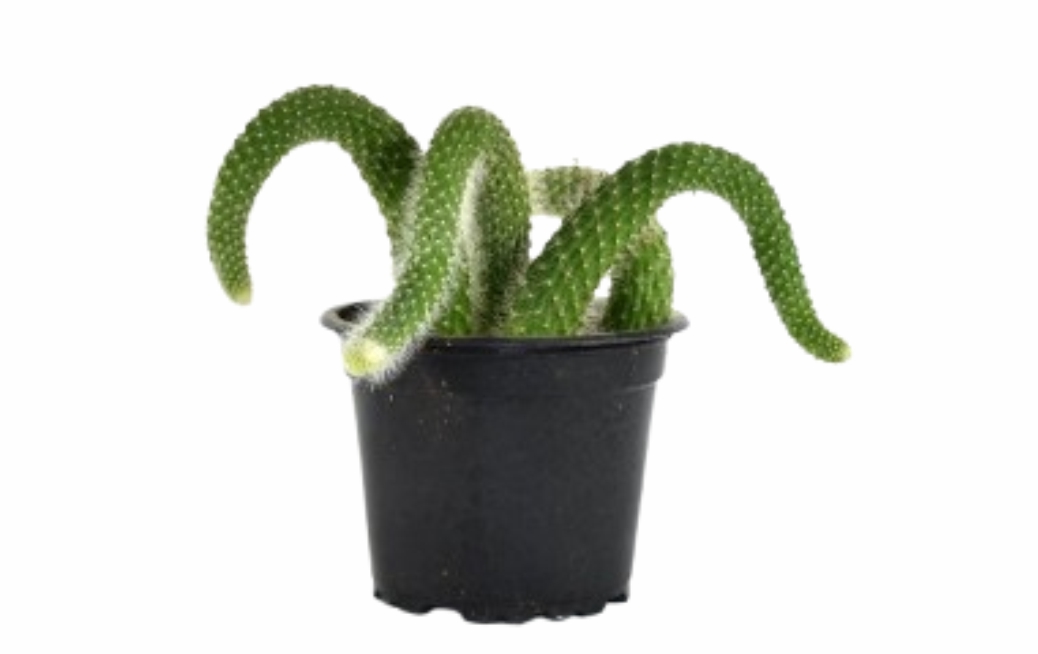
Here are the features of Monkey Tail Cactus:
| Feature | Description |
| Scientific Name | Cleistocactus winteri |
| Common Names | Monkey Tail Cactus, Woolly Torch |
| Origin | South America |
| Growth Habit | Columnar, cylindrical stems densely covered in fine spines and wool |
| Size | Can grow up to 3 feet (90 cm) tall, with stems up to 2 inches (5 cm) thick |
| Flowers | Blooms with red or orange flowers that emerge from woolly areoles |
| Blooming Season | Spring to early summer |
| Light Requirements | Bright indirect light tolerates some direct sunlight |
| Watering Needs | Allow soil to dry out entirely between waterings; reduce in winter |
| Soil | Well-draining cactus or succulent mix |
| Temperature Tolerance | Prefers warm temperatures, protect from frost |
| Humidity Preference | Low humidity levels, typical of desert environments |
This table provides a concise overview of the key characteristics and care requirements for the Monkey Tail Cactus.
How do you grow and care for Monkey Tail Cactus?
Here’s what you need to know about growing and caring for a Monkey Tail Cactus:
Light
Monkey Tail Cactus thrives in bright, indirect sunlight. A south-facing window is ideal, but an east-facing window will also work.
Avoid too much direct sunlight, as this can scorch the stems. If your cactus isn’t getting enough light, the stems will become thin and spindly and may not flower.
Soil
Plant your Monkey Tail Cactus in a well-draining cactus mix. You can find cactus mix at most garden centers or make your own by mixing equal parts potting soil, perlite, and sand. Good drainage is essential to prevent root rot.
Watering
During the growing season (spring and summer), water the Monkey Tail Cactus thoroughly, allowing the soil to dry completely between waterings.
This is usually done every 10-14 days, depending on climate and humidity.
In the dormant season (fall and winter), watering is reduced significantly to about once a month or when the soil is fully dry, mimicking the cactus’s natural dry winter conditions.
Temperature
Monkey Tail Cactus prefers warm temperatures but can withstand cooler temperatures to around 50°F (10°C). However, it’s best to protect your cactus from frost.
Humidity
Monkey Tail Cactus does well in average household humidity. You don’t need to mist it or use a humidifier.
Fertilizer
You can fertilize your Monkey Tail Cactus once a month during the growing season with a diluted balanced fertilizer. However, fertilization is not essential; the cactus will still do fine without it.
Repotting
Repot your Monkey Tail Cactus only when it becomes root-bound or if the soil starts to compact. When repotting, use a pot slightly larger than the current pot.
With proper care, your Monkey Tail Cactus can live for many years and produce beautiful red flowers in the spring or summer.
Overview of Rat Tail Cactus
The Rat Tail Cactus, scientifically known as “Aporocactus flagelliformis,” is native to Mexico and Central America. It thrives in rocky, well-drained soils and prefers a climate with plenty of sunlight (2).
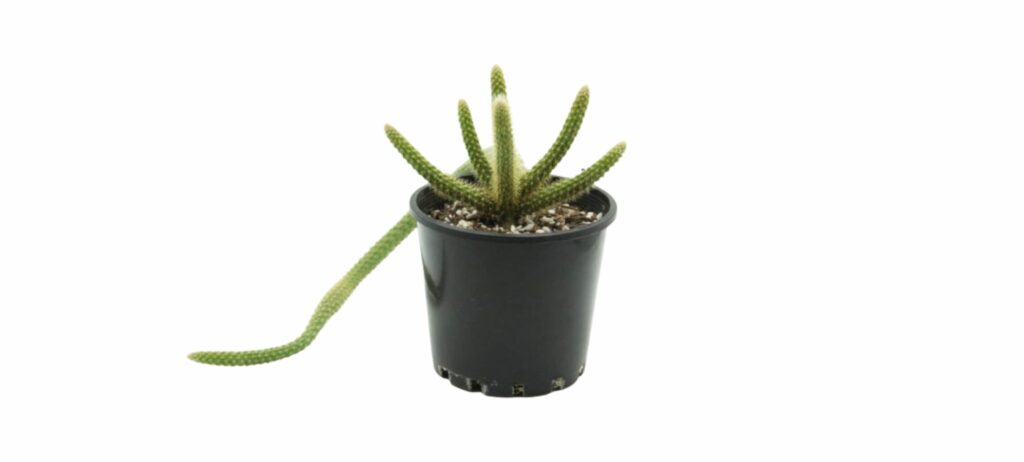
It is well-adapted to arid conditions, requiring minimal water and showing a high tolerance for drought. In its natural habitat, it grows on cliffs and crevices, where it can benefit from good air circulation and ample light.
Here are the key features of Rat Tail Cactus:
| Feature | Description |
| Scientific Name | Aporocactus flagelliformis |
| Common Names | Rat Tail Cactus, Creeping Devil, Rattail Cactus |
| Family | Cactaceae |
| Origin | Mexico and Central America |
| Growth Habit | Trailing, cylindrical stems covered in fine spines |
| Size | Stems can grow up to 4 feet (1.2 meters) long |
| Flowers | Bright pink to red, tubular flowers |
| Blooming Season | Spring to early summer |
| Light Requirements | Bright indirect light tolerates some direct sunlight |
| Watering Needs | Allow soil to dry out completely between waterings; reduce in winter |
| Soil | Well-draining cactus or succulent mix |
| Temperature Tolerance | Prefers warm temperatures, protect from frost |
| Humidity Preference | Low humidity levels, typical of desert environments |
| Maintenance | Minimal pruning; watch for pests and overwatering |
By understanding these features, you can decide if a Rat Tail Cactus is the perfect addition to your collection!
How do you grow and care for Rat Tail Cactus?
Here’s a breakdown of the light, water, soil, temperature, and humidity needs of your Rat Tail Cactus:
Light
The Rat Tail Cactus thrives in bright, indirect light but can tolerate some direct sunlight. Place it near a sunny window where it can receive plenty of light, especially during the growing season.
Water
Water the cactus moderately during the growing season (spring and summer), allowing the soil to dry out between waterings. In the winter, watering is reduced significantly to prevent root rot.
Soil
Plant your Rat Tail Cactus in a well-draining cactus or succulent mix. This type of soil helps prevent waterlogging, which can harm the plant.
Temperature
The Rat Tail Cactus thrives in temperatures between 50-75°F (10 and 24°C). It can tolerate slightly higher temperatures but should be protected from frost and cold drafts.
Humidity
The Rat Tail Cactus prefers low to moderate humidity. It is well-suited to dry indoor environments and does not require additional moisture. Ensure good air circulation around the plant to prevent mold and fungal issues.
Comparing Monkey tail vs. Rat tail
While these cacti share some similarities due to being succulents, they have distinct characteristics. Here’s a breakdown to help you tell them apart and understand their care needs:
Got it! Here’s the same comparison table with narrower column widths for a more compact format:
| Feature | Monkey Tail Cactus | Rat Tail Cactus |
|---|---|---|
| Stems | Thick, fuzzy, white-haired trailing stems | Thin, green, may turn reddish in sun |
| Spines | Long, soft, white, hair-like | Short, bristly, yellow to reddish-brown |
| Flowers | Red or orange, spring to early summer | Pink to red, spring to early summer |
| Light | Bright indirect; some sun ok | Bright direct light; some shade midday |
| Growth | Fast-growing, great in hanging baskets | Fast-growing, ideal for hanging too |
| Feel | Soft and fuzzy | Slightly rough and prickly |
Let me know if you’d like this turned into an image or styled for a website or social post!
Visual Differences
- Monkey Tail Cactus: The Monkey Tail Cactus features long, trailing stems covered in soft, white, hair-like spines, giving it a furry appearance. These stems can grow several feet long, making the plant ideal for hanging baskets or draping over pots. It produces bright red or orange tubular flowers.
- Rat Tail Cactus: The Rat Tail Cactus has slender, cylindrical stems with short, bristly spines. Its green stems can grow several feet long, resembling a rat’s tail. The cactus has a trailing or cascading growth habit, making it suitable for hanging baskets. It is known for its vibrant pink to red tubular flowers that bloom in spring.
Care Differences
- Monkey Tail Cactus: The Monkey Tail Cactus prefers bright, indirect sunlight but can tolerate full sun. It should be watered sparingly, with the soil allowed to dry completely between waterings. This cactus thrives in well-draining or succulent mix and enjoys warm temperatures, though it can tolerate more excellent conditions if kept dry and protected from frost.
- Rat Tail Cactus: The Rat Tail Cactus prefers bright light with some direct sunlight and requires minimal water, allowing the soil to dry out between waterings. It thrives in well-draining, rocky soil and warm, arid conditions, needing protection from frost.
Growth Rates
- Monkey Tail Cactus: Generally grows moderately fast, especially in optimal conditions with plenty of light and proper care.
- Rat Tail Cactus: Typically grows moderately, producing long, trailing stems over time.
Blooming Period
- Monkey Tail Cactus: This blooms during the growing season, typically in spring and summer, producing bright red or orange tubular flowers.
- Rat Tail Cactus: The Rat Tail Cactus blooms in spring, showcasing vibrant pink to red tubular flowers that cover the trailing stems.
Spine Characteristics
- Monkey Tail Cactus: The Monkey Tail Cactus features soft, hair-like spines that give the plant a furry appearance and a unique texture.
- Rat Tail Cactus: The Rat Tail Cactus has short, bristly spines covering its slender, cylindrical stems, contributing to its distinctive look.
Maintenance
- Monkey Tail Cactus: Regular pruning of dead or damaged stems helps maintain appearance.
- Rat Tail Cactus: Low maintenance, but occasional trimming can help manage growth.
These differences highlight the unique characteristics and care requirements of each cactus, making them suitable for various preferences and growing conditions.
Common Uses and Display Ideas
These charming cacti, unique appearances, and low-maintenance needs can be beautiful additions to your home. Here are some ideas for how to use and display them:
Indoor Decoration
- Monkey Tail Cactus: This cactus is ideal for hanging baskets, where its long, furry stems can drape down beautifully. It also works well in terrariums, adding an exotic touch to indoor displays.
- Rat Tail Cactus: This cactus is perfect for hanging baskets, allowing its slender, bristly stems to cascade attractively. It can also be used in large terrariums or mounted on decorative structures.
Outdoor Gardening
- Monkey Tail Cactus: Thrives in rock gardens or xeriscapes, where it can trail over rocks or garden walls. Companion plants include other cacti and succulents with similar light and water needs.
- Rat Tail Cactus: Suitable for outdoor hanging baskets or containers placed in bright, sunny spots. It pairs well with other drought-tolerant plants like agave and echeveria.
DIY Projects
- Monkey Tail Cactus: This plant can be used in DIY macrame plant hangers or incorporated into succulent wreaths and living walls for a unique decorative element.
- Rat Tail Cactus: Great for creating living art frames or succulent topiaries, adding texture and color to DIY gardening projects.
Common Issues and Solutions
While these cacti are relatively easy to care for, a few issues can arise. Here’s a breakdown of common problems and solutions for all three:
Pest Control
- Monkey Tail Cactus: Common pests include mealybugs and spider mites. To deal with them, use insecticidal soap or neem oil, and ensure good air circulation to prevent infestations.
- Rat Tail Cactus: Prone to aphids and scale insects. Remove pests with a cotton swab dipped in alcohol or apply insecticidal soap. Regularly inspect plants to catch infestations early.
Disease Prevention
- Monkey Tail Cactus: Root rot is a common issue due to overwatering. Ensure well-draining soil and avoid waterlogging. Fungal infections can be treated with fungicides and by improving air circulation.
- Rat Tail Cactus: Susceptible to fungal diseases. Prevent these by avoiding overhead watering and ensuring the plant is in well-draining soil. Treat with fungicides if necessary.
Troubleshooting Growth Problems
- Monkey Tail Cactus: Leggy growth often results from insufficient light. Move the plant to a brighter location. Lack of blooms can be due to inadequate sunlight or improper watering.
- Rat Tail Cactus: If growth is leggy, the plant may need more light. Ensure it gets plenty of sunlight. Lack of blooms can result from inadequate light or nutrients and fertilization during the growing season.
Conclusion
In conclusion, the Monkey Tail and Rat Tail bring charm and beauty to any plant collection.
You can choose the cactus that best fits your gardening style and environment by understanding their visual differences, specific care requirements, and growth habits.
With proper care, these cacti can thrive and become stunning focal points in your home or garden, showcasing the diverse and captivating world of succulents.

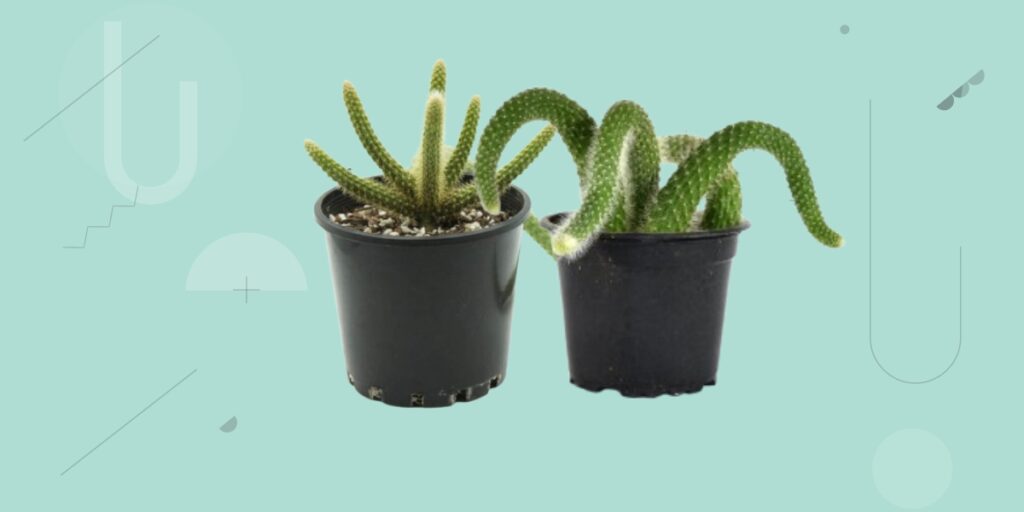
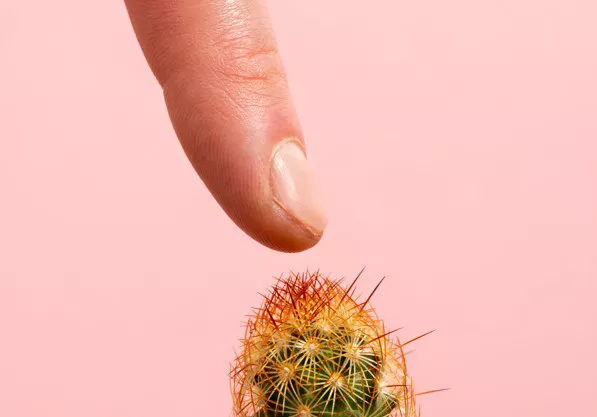
![Types of Rat Tail Cactus Differences and Similarities [With Pictures]](https://cactusology.com/wp-content/uploads/2025/04/Types-of-Rat-Tail-Cactus-Differences-and-Similarities-With-Pictures.jpg)
